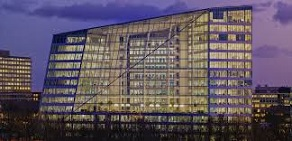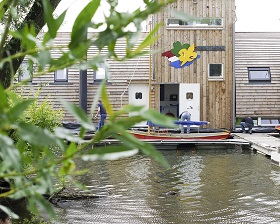Some proponents of affordable housing may be under the impression that sustainable homes are more expensive to construct and maintain than those built using traditional means. However, there are actually a number of sustainable practices that can make green homes more affordable than traditional homes for their inhabitants.

There are a number of cost-effective green home improvements, building strategies and approaches that can improve efficiency and reduce costs related to owning and maintaining single-family homes, apartments and other types of residential properties. Additionally, owning a green home may not only make for reduced energy bills buy may garner more interest from prospective buyers when it comes time to list a property, getting owners a decent return on their original investment.
Three effective and affordable improvements on green homes
Energy-efficient practices can benefit homeowners, building owners, and tenants alike, but many are not aware of the significant return on investment that comes with some of the more effective green home improvement projects. What can households do to save money on energy costs while staying comfortable throughout the year? One of the most effective projects out there is to add insulation and to air seal a home. Insulation can be added in attic spaces, between walls and in older and existing homes in order to reduce heating and cooling costs. In addition to this, it is also useful to air seal to eliminate drafts, often beginning by sealing and caulking around older windows and doors. Households may experience as much as a 15 percent reduction on energy costs just through implementation of air sealing and additional insulation.

Green homes should also save water as the costs of water continue to increase and homeowners are starting to take notice. There are a number of water-saving appliances and fixtures on the market which are affordable and can save homeowners a significant amount of money. According to the EPA, one WaterSense toilet that runs about $176 can save a family almost $2,000 over its entire lifetime of use. Savings may depend on the cost of the model and water costs in a specific area.
Lastly, lighting is one of the easiest places to start when greening up a home. LED lighting is widely available and while some may be more expensive to purchase than traditional bulbs they last longer, require less wattage and can save an owner potentially $75 a year when only five bulbs are replaced with LED bulbs.
These are some of the low-cost ways that homeowners can begin to increase energy-efficiency in a home without breaking the bank and start to derive long-term savings. Homeowners living in areas prone to drought or with higher than average energy costs may take steps to reduce water and energy consumption, not only for their financial benefit, but to do their part to help their community and reduce the burden on the local grid.
Greener Home Building Strategies
Building green homes has changed a great deal since it began. Once cost-prohibitive, these practices have become more affordable and efficient over time. Because of this, increasing numbers of homeowners and builders are looking into the functionality and best use of various green home sustainable materials such as bamboo, earth-block and recycled materials.
An underrated aspect of sustainable building is location. Living in a walkable community with access to shops, schools and restaurants, is another aspect to the development of green homes and communities that reduces the cost of transportation and pollution.
Empower Residents and Communities to Build More Sustainably
Sustainability is not only achievable in the middle to upper-end housing market, but in the low-cost housing market as well. In order to reduce building costs for low-cost green homes, communities and households can come together to improve existing homes and build new construction units. Building control is needed at the site to ensure safe and appropriate practices and the correct implementation of technological innovations, while institutes and government agencies can provide additional support to those looking for access to high-quality building materials, in the form of trainings, workshops, special programs, incentives and more. More support and awareness will only foster how beneficial and affordable building green can be in any community.
Interesting? Then also read:
Innovative concrete: we need it badly, it’s there, we don’t use it
Green building
Straw, an excellent construction material
